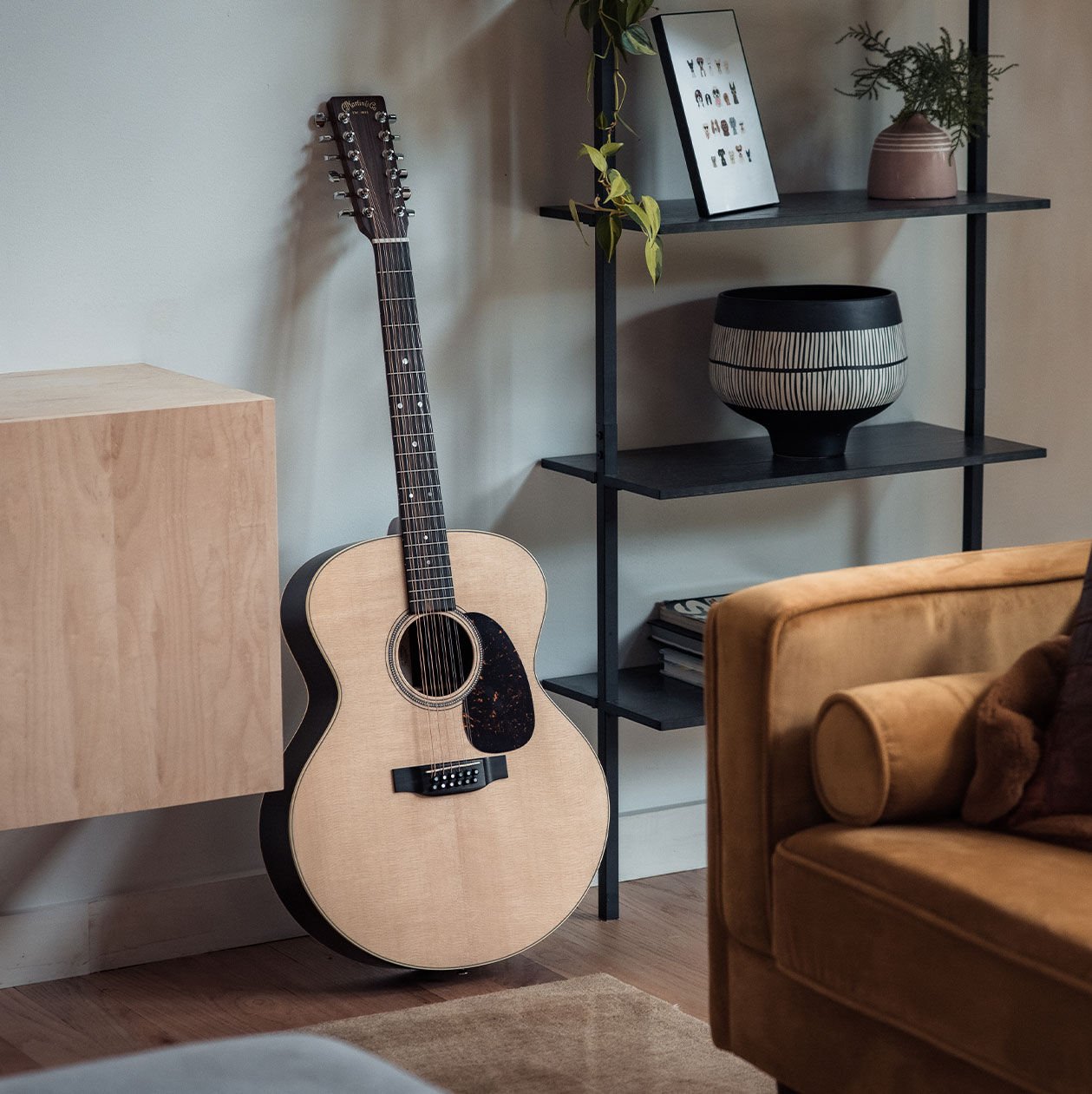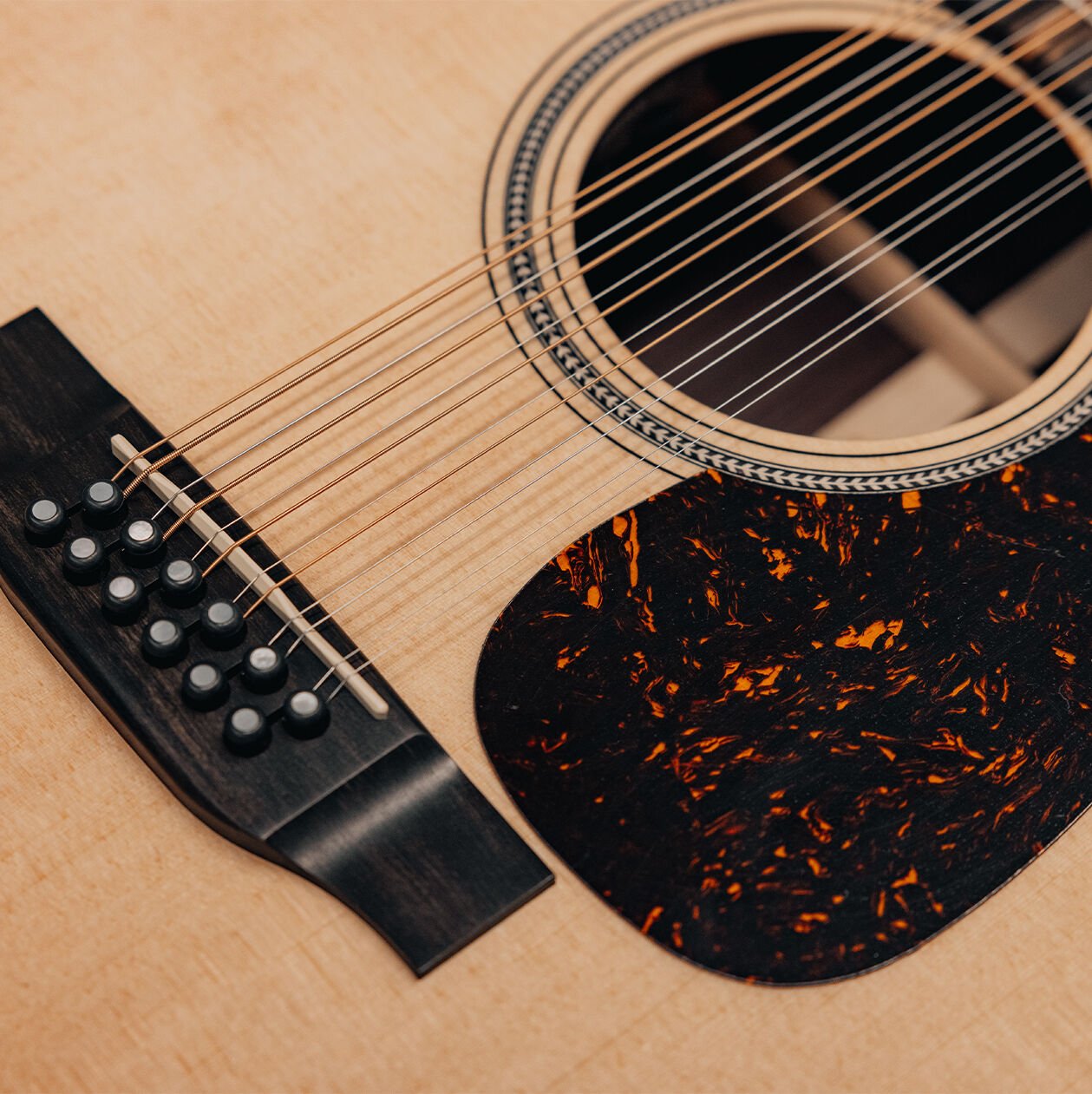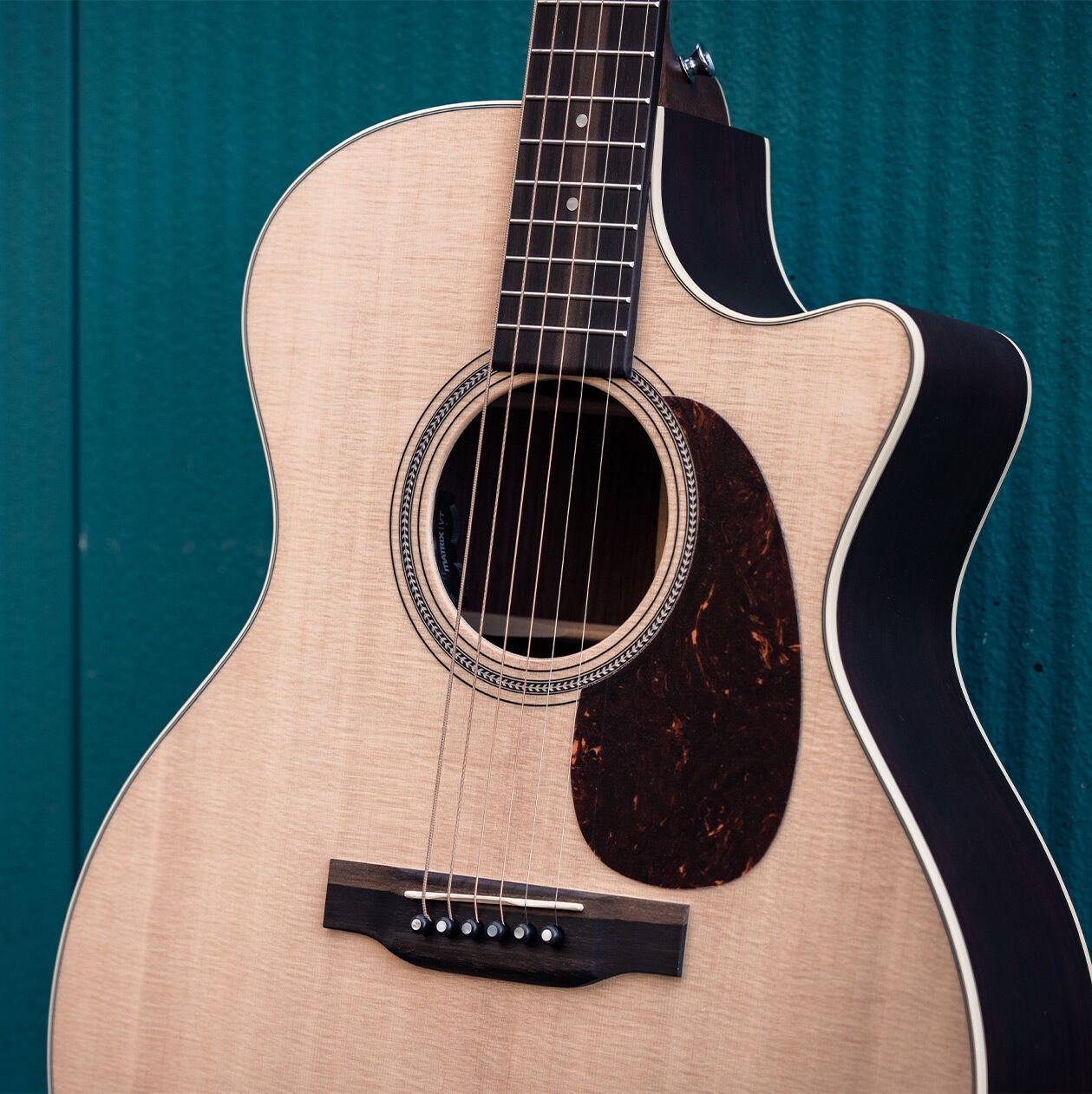From the Factory | January 24, 2024
What Are the Differences Between 6-String and 12-String Guitars?

In the wide world of stringed instruments, the guitar offers players many unique ways to express themselves and unleash their inner artist. Among these options are 6-string and 12-string acoustic guitars, each with their own special characteristics and sonic personality.
In this blog post, we’ll unravel what sets these two musical companions apart, answering the age-old question: What is the difference between a 6-string and 12-string acoustic guitar?
If you answered, “one has six more strings,” you’re not wrong. But there’s more to it than that! Keep reading to find out.

6-String vs. 12-String Acoustic Guitar
Size & Construction: When it comes to size and construction, the most obvious difference between a 6-string and 12-string guitar is the number of strings. A 6-string guitar – the standard configuration – features six strings while the 12-string guitar features, you guessed it, twelve strings grouped into six pairs.
The headstock, fretboard, neck, bridge, and body are all impacted by this difference. 12-string guitars tend to have a wider neck and a slightly larger body and bridge to accommodate the additional strings. The design not only influences the overall feel of the instrument but also affects the player’s reach and comfort during extended playing sessions.
Tuning: The tuning of 6-string and 12-string guitars is another key difference. While the 6-string guitar typically follows the standard EADGBE tuning, a 12-string guitar introduces an extra layer of complexity. The strings on a 12-string guitar are tuned in pairs, with the lowest four tuned an octave higher and the highest two tuned in unison, creating a bright and resonant sound.
Watch the video here to learn how to restring a 12-string guitar.
Sound Quality: Perhaps the most striking difference between these guitars is the sound they produce. The 12-string guitar has a lush, full-bodied sound, thanks to the doubled strings. This characteristic makes it a favorite for genres like folk, rock, and blues, where the guitar’s harmonically rich tones and depth add a mix of complexity to the music.
If you’re searching for that classic “chime” heard on countless recordings – including Pink Floyd’s “Wish You Were Here,” Bon Jovi’s “Wanted Dead or Alive,” and Eagles’ “Hotel California” – 12-string guitars are the way to go.
Fret Pressure: Because of the doubled strings, playing a 12-string guitar requires some more pressure when fretting chords and playing solos. This can be both a challenge and an advantage, offering a unique experience for beginners and seasoned guitarists. More pressure also means quicker finger fatigue, making it essential for players to build up their strength and endurance.
Playing Style: The playing style on a 6-string and 12-string guitar can also differ significantly. While both can be used for strumming and fingerpicking, the 12-string guitar excels in strumming, producing a bright and full-bodied tone. On the other hand, the 6-string guitar is often preferred for intricate fingerstyle playing and precise picking.

Shop for 6-String and 12-String Guitars
The choice between a 6-string and 12-string guitar is ultimately a matter of personal preference and musical style. The 6-string guitar offers a traditional, familiar feel, while the 12-string introduces some complexity to your musical canvas.
Whether you’re drawn to the classic, crisp clarity of a 6-string or the lush chime of a 12-string, both guitars have plenty to offer if you're looking to add to your current arsenal – and Martin has you covered. So, what are the best 12-string guitars?
While we’re known throughout the world for our iconic lineup of 6-string guitars, our 12-string guitars include the HD12-28 from the classic Standard Series, Grand J-16E from the Nazareth-built 16 Series, and the D-X2E 12-String from the durable and affordable X Series.
When asking, “What is the difference between a 6-string and 12-string acoustic guitar?,” remember that the answer lies in the details, and the best choice is the one that resonates with you.
Until next time, happy playing!